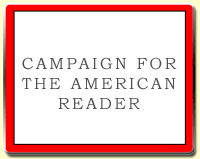Richard Beeston began his long and distinguished career as a foreign correspondent working for a clandestine Arabic radio station run by MI6 during the Suez War. From 1961 to 1986 he was the
Daily Telegraph’s correspondent for Beirut, Nairobi, Moscow and Washington and in the late ‘80s the
Daily Mail’s Washington correspondent. He has covered many significant world events, including the collapse

of the Belgian Congo, East Africa’s post-independence upheavals, Middle East revolutions, the Vietnam War, Watergate and the Soviet invasion of Afghanistan. Since 1990 he has worked as a freelance writer for
The Times,
Daily Telegraph and
Saga Magazine.
In 2010 he discussed five top books on spies, lies and foreign correspondents with Alex Forsyth for The Browser, including:
The Master Spy
by Phillip Knightley
Finally we have The Master Spy, about the notorious third man, Kim Philby.
That’s a biography really. Knightley says he’s the only Western journalist to interview Philby in depth after his defection to the Soviet Union in 1963. He seems to have got closer to Philby than anyone else.
For the uninitiated, who was Philby?
Philby was probably the most successful spy the Soviet Union has ever had. Not only was he working for the Secret Intelligence Service, he was actually working for the section that dealt with operations against the Soviet Union. So he knew all the British spies and was able to communicate directly with the Soviets. When Burgess and Maclean, the Cambridge spies, defected to Russia the press came up with the allegation that Philby was the third man who tipped them off. So that’s how he got his title. He was the most formidable of the spies, perhaps in the Western world. The damage he did to British intelligence was amazing.
I knew Philby quite well. I was then the Middle East correspondent for the News Chronicle in Beirut. He arrived as The Observer correspondent after he had successfully denied the accusation that he was the third man.
Was he free of suspicion?
The SIS were not convinced he was a spy and were rather protective of him, but the CIA said if he remained in secret service they would not cooperate anymore with the British. So they were forced to sack him. But they themselves were not convinced that he was. So Philby was doing a little bit of espionage on the side. I think the men in charge of the station in Beirut suspected he was guilty.
You were close.
I became a good friend of his, our children went to the same school, we covered stories together.
After the first accusations fell, one dropped one’s suspicions about him and just accepted him as a friend and colleague. So when I was in Yemen and I heard the news that he had disappeared I couldn’t believe he’d gone off to Moscow – I thought someone had knocked him on the head.
Too close to see the whole picture?
Yes. I found him extraordinarily charming. After he defected, no one had heard of him for 15 years, and I happened to meet him at the Bolshoi, when I was the Moscow correspondent for the Telegraph. He was delighted to  meet me and my wife because he wasn’t responsible for it, it was a chance meeting and he couldn’t get into any trouble. It was like meeting an old friend again.
meet me and my wife because he wasn’t responsible for it, it was a chance meeting and he couldn’t get into any trouble. It was like meeting an old friend again.
Does Knightley give a fair and balanced account of Philby?
Yes, very. He goes through the Cambridge spy ring. I think quite a few of these Cambridge undergraduates were genuinely idealistic about things. The book describes him as ‘an establishment figure who betrayed the West, who decided to go against his class and his upbringing for what he believed to be the best and impeccable motives. And then spent most of his life cultivating two sides of his head.’ He had the most extraordinary double life. It’s a detailed account of his life and tries to explain his motives, which is hard to do.
How does Knightley go about painting those motives?
It was the political climate of the time; we were appeasing the fascists. He claimed in an interview: ‘I betrayed no one: I’ve always had the same employer (the Russians) and the same opinions, I was a straight penetration agent.’ I had a feeling he got a strange pleasure from betraying people, having a secret they didn’t know about. There was that element to him.
Read about
the other books Beeston tagged at The Browser.
--Marshal Zeringue
 Elizabeth Wilhide is the author of the novel Ashenden, whose title "character" is also a house. Ashenden Park is based on Basildon Park, the Berkshire stately home that featured as Netherfield Hall in the 2005 adaptation of Pride and Prejudice.
Elizabeth Wilhide is the author of the novel Ashenden, whose title "character" is also a house. Ashenden Park is based on Basildon Park, the Berkshire stately home that featured as Netherfield Hall in the 2005 adaptation of Pride and Prejudice.childhood banished to a cupboard under the stairs. The cosy Burrow, cluttered with “rusty cauldrons and old Wellington boots,” introduces Harry to a family life where warmth, humor, and magic are part of everyday existence.



















































